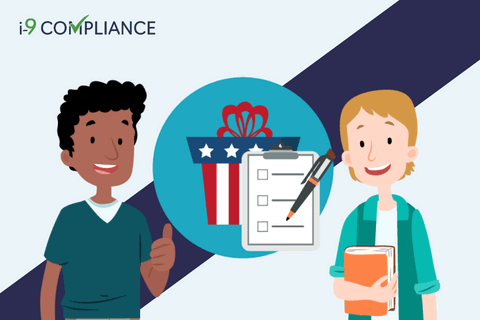Employment Authorization Options for Foreign National Students

October 14, 2022
The United States is known for offering international students many of the best academic and vocational training opportunities in the world. As a result, students ranging from hundreds of thousands apply to attend educational institutions in the United States using F-1 and M-1 visas. Students residing in the US through an F-1 visa must attend an accredited academic institution full-time, including colleges and universities. In contrast, students entering vocational and non-academic education may instead get an M-1 visa. These foreign national students can offer employers excellent additions to their workforce; however, knowing how these students can legally be employed is crucial.
There are several restrictions employers must consider when looking to employ foreign national students using either visa. However, the US Department of Homeland Security (DHS) and US Citizenship and Immigration Services (USCIS) clarified these restrictions. For example, F-1 students may present documentation to the USCIS proving hardship to gain work authorization with assistance from a Designated School Official (DSO) at their academic institution.
During the first academic year, an F-1 student may only work on-campus part-time while school is in session and full-time during breaks. After their first academic year, students have three different options for off-campus employment. These options include optional practical training (OPT), Science, Technology, Engineering, and Mathematics, optional practical training Extension (STEM OPT), and curricular practical training (CPT). More detail on these options include:
- OPT offers a maximum of 12 months of employment to earn practical experience related to their degree, available during their studies or after. However, any period of employment under OPT will come out of the pool of one year. The job must be recommended by a DSO and authorized by USCIS.
- CPT consists of work/study programs, internships, and other forms of practice performed through cooperative agreements with an educational institution. A DSO must authorize this option and verify that it is an integral part of a curriculum.
- STEM OPT grants students in science, technology, engineering, and mathematics-related courses a 24-month extension to their post-completion OPT. This option means eligible students can qualify for a total of 36 months of OPT, which could offer employers time to file for an H-1B visa before its expiration.
Employment options are more limited for students entering the US on an M-1 visa. These students may only seek OPT employment after completing their course of study, which must have proven relevance and recommendation for practical training. However, this applies only if the training proved unavailable to the student in their country of residence. In addition, this OPT employment authorization is limited to one month for every four months of full-time study up to a cap of six months.
In all of these cases, the documentation required to complete the employment eligibility verification process can vary, making it difficult for many employers to complete Form I-9. The best way to simplify this process is by investing in an electronic Form I-9 management system. This tool can guide employers at every step while making secure and convenient storage of forms and documentation simple.
Our I-9 Compliance tool will help quickly verify your employment eligibility automatically.